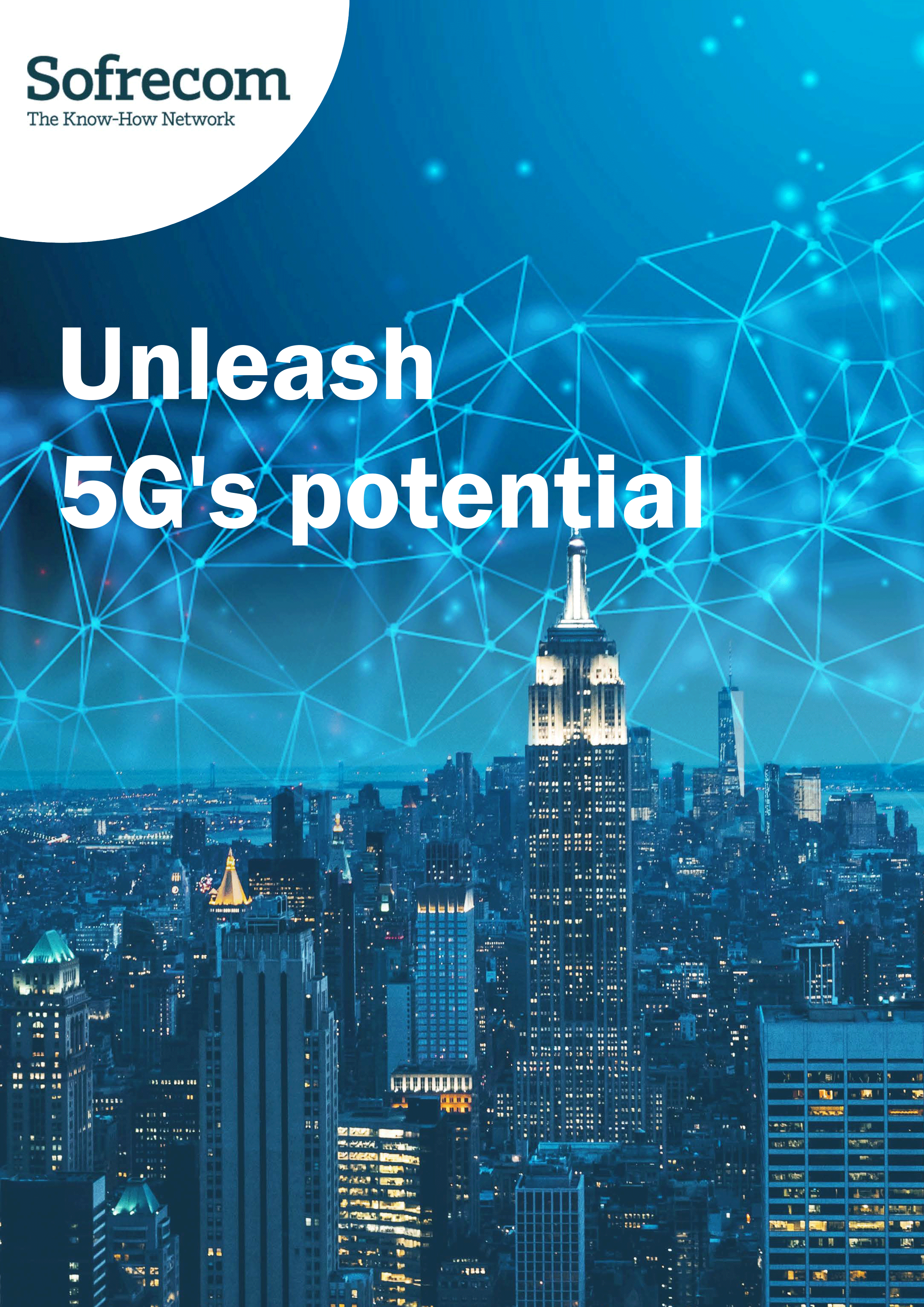
The deployment of Open RAN (Radio Access Network)occurs after the installation of various elements of the 5G core network. It aims to improve the quality of service and operation of radio access networks, reduce their deployment and operating costs and make networks more flexible and programmable using technologies based on artificial intelligence and machine learning.

Since the end of 2019, Orange has been deploying its 5G NSA (non-standalone) technology in many cities across Europe. The arrival in 2023-2024 of 5G SA (standalone) technology and the 26 GHz frequency band opens a new realm of possibilities for operators, businesses, and cities alike.
Orange has launched 5G in NSA mode in the3.5 GHz band. What are the features of this first 5G release?
The 5G that Orange and other operators have been deploying in Europe for three years is called “non-standalone” because it is still partially supported by the existing 4G LTE infrastructure. In this first phase, we are deploying new 5G relay antennas on a 4G network core. These “smart” antennas, installed on city roofs and rural towers, are equipped with innovative technologies that offer advanced features:
• Massive MIMO (Multiple Input, Multiple Output) allows a very large number of users to be connected simultaneously, thanks to a network of smart micro-antennas located on the same equipment.
• Beamforming focuses the signal of 5G antennas only on users who need it, at the precise moment they need it. This advancement limits the public’s exposure to the waves as well as the energy consumption of the 5G network. Orange has made the strategic choice to launch a 5G that differs from 4G; our customers covered by Orange 5G NSA already have excellent ease of use, especially with video.
The second step is to completely move away from the 4G infrastructure. Which features will 5G SA have?
The standalone 5G that Orange has started to deploy on private networks, particularly industrial ones, and that we will gradually deploy on the entire public network in different European countries is based on a renewed end-to-end architecture: new signaling, a new information system for network operation, and a new network core for managing the connection between users and the network.
This 5G network is developed using a “cloud-native” approach that allows software and hardware to be separated and network functions to be flexibly placed on servers.
This fifth-generation standalone mobile technology provides higher bandwidth, ultra-low latency and an expansion of connectivity within the same area. It allows massive IoT and network slicing, both of which are highly requested by companies. Virtual network slicing allows for the creation of bands to manage uses, qualities of service and security levels in a more personalized manner, with very high bandwidth and near-zero latency...
What other benefits will 5G SA and slicing bring to an operator?
With 5G technology, the operator will address very specific needs. It will be able to prioritize flows and reserve capacity, for example, for emergency services (police and military vehicles), critically connected infrastructure and various necessary businesses. Diverse mobile usage is increasing by 40% annually. Connecting a sensor, an object control, a smartphone or an HD camera to a mobile network does not require the same bandwidth or security levels. 5G SA will offer operators a much more flexible toolkit to ensure the best connectivity for each of their customers, whether they are consumers, companies or even wholesale customers.
You are currently investigating different technologies for 5G applications, including the Open-RAN (Open Radio Access Network). Could you tell us more about this?
The deployment of OPEN RAN (Radio Access Network) occurs after the installation of various elements of the 5G core network. It aims to improve the quality of service and operation of radio access networks, reduce their deployment and operating costs and make networks more flexible and programmable using technologies based on artificial intelligence and machine learning.
Through open protocols and interfaces, the Open RAN network architecture allows the use of non-proprietary sub-components from various suppliers. To accelerate the development of an open, intelligent, cloud-based RAN and a rich ecosystem around Open RAN, Orange inaugurated the first Open RAN Integration Center in France in November 2021.
Will Open-RAN bring significant benefits to operators?
I see three common advantages: to evolve their networks throughout their lives and adapt them to customer needs, operators will be able to buy their software and hardware interfaces from different suppliers without being beholden to a single supplier. They will also be able to integrate the mobile access part onto the same infrastructure as the core network and add intelligence to the network through the optimization of beamforming. This beamforming optimization is a strong challenge for Orange, which already ranks number one in quality on the 5G NSA in France and Spain and intends to do so on the 5G SA, as well. Slicing the beamforming network requires automating millions of parameters. Being able to do so natively in the equipment will become a differentiating factor among operators.
How does the 26 GHz frequency band fit in with another long-awaited shift?
The low frequencies (700 to 900 MHz), used since 2G, are very well suited to cover both outdoor and indoor areas. These frequencies have allowed us to determine where to set up our various sites.
Thanks to the intermediate bands (from 1.8 to 3.4 GHz), which are very similar to those used at home with Wi-Fi, we have been able to add capacity to the network to meet usage growth.
The 26 GHz band will offer fiber-like bandwidths, allowing, for example, 10 gigabits to be shared locally. However, it has a disadvantage: it does not penetrate buildings well. It will be very useful in very specific contexts that we are currently testing very busy waiting areas such as train stations, stadiums that attract large gatherings at the same time and industrial sites with heavy use of HD cameras. We will therefore deploy the band in a reasonable manner: in densely populated areas in Europe, but also in developing countries where the fiber deployment is not very advanced and where it will provide bandwidths that are comparable to those of fixed use.
Does Orange carry out all these techno evolutions internally?
Orange’s innovation teams have researched and developed various generations of mobile networks based on a wide ecosystem of industry partners. They’re already working on 6G technology! We also contribute a lot to the standardization of these networks, which we test with partners before deploying them in the Group’s 27 countries.





